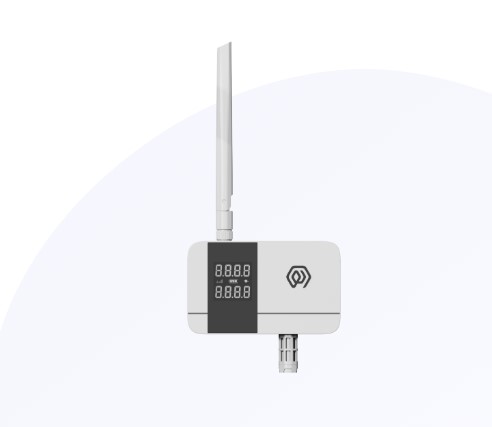In today’s digital era, the ability to connect devices seamlessly and reliably is shaping the way industries, cities, and even homes operate. From agriculture fields to urban smart grids, wireless communication has become the backbone of innovation. Among these technologies, LoRaWAN sensors stand out for their unique ability to combine low power consumption with long-range connectivity. At Manthink Technology, we believe that understanding the potential of this technology is crucial for organizations aiming to stay competitive in an increasingly data-driven world.
What Are LoRaWAN Sensors?
To grasp their impact, it’s important to first understand what LoRaWAN sensors actually are. LoRaWAN (Long Range Wide Area Network) is a communication protocol designed for Internet of Things (IoT) applications. Unlike traditional wireless solutions that focus on high-speed data transfer, LoRaWAN prioritizes efficiency, allowing sensors to transmit small amounts of data across long distances while consuming minimal power.
These sensors can capture real-time data such as temperature, humidity, air quality, pressure, motion, and more, depending on the application. Because of their lightweight energy requirements, they can function for years on a single battery, making them highly practical for remote and hard-to-reach environments.
Why LoRaWAN Sensors Matter
The real power of LoRaWAN sensors lies in their versatility. Traditional networks often face limitations in range, cost, or power consumption, but LoRaWAN strikes a balance that makes it ideal for large-scale deployments. Consider a city that wants to monitor air pollution across multiple districts. With LoRaWAN, sensors can be distributed across vast areas and transmit data back to a central hub without the need for expensive infrastructure upgrades.
At Manthink Technology, we see these advantages as transformative, especially for industries that need reliable, low-cost solutions to monitor and manage assets.
Key Benefits of LoRaWAN Sensors
1. Long-Range Communication
LoRaWAN sensors can transmit data over distances ranging from 2 to 15 kilometers, depending on environmental conditions. This makes them especially valuable in rural or industrial settings where traditional networks struggle.
2. Low Power Consumption
Battery life is a major consideration in IoT. Unlike Wi-Fi or cellular technologies that require frequent charging, LoRaWAN sensors can last up to 10 years with minimal maintenance, dramatically lowering operating costs.
3. Scalability
Whether it’s a small deployment of 10 sensors or a city-wide rollout involving thousands, LoRaWAN infrastructure is built to scale. Its open standard and interoperability enable easy expansion without heavy investment.
4. Cost Efficiency
Because they require less energy and minimal supporting infrastructure, LoRaWAN sensors help businesses reduce both upfront and ongoing costs, allowing faster return on investment.
5. Enhanced Data Collection
These sensors can gather data at regular intervals, ensuring organizations gain real-time insights that support smarter decision-making.
Applications Across Industries
Smart Agriculture
Farmers can leverage LoRaWAN sensors to monitor soil moisture, track livestock, and predict weather conditions. This helps optimize water usage, reduce costs, and improve crop yields.
Smart Cities
Urban planners and governments are increasingly adopting LoRaWAN to manage street lighting, monitor air quality, and track waste collection. The result is improved sustainability and better public services.
Industrial Monitoring
Factories and warehouses can use sensors to monitor equipment health, track inventory, and ensure worker safety. Predictive maintenance powered by real-time sensor data helps avoid costly downtime.
Environmental Protection
By deploying LoRaWAN sensors in forests, oceans, or protected areas, organizations can monitor environmental conditions and detect early signs of pollution or natural hazards.
Healthcare
Hospitals and clinics can employ sensors to monitor patients remotely, track medical equipment, or manage energy efficiency within their facilities.
The Role of Manthink Technology
At Manthink Technology, we are committed to helping businesses harness the true potential of IoT through innovative solutions. Our expertise with LoRaWAN integration allows us to provide end-to-end services—from designing sensor networks to ensuring secure data transmission and analysis.
We believe connectivity is not just about linking devices, but about enabling meaningful insights that drive progress. By adopting LoRaWAN sensors, organizations can unlock new levels of efficiency, sustainability, and growth.
The Future of LoRaWAN Sensors
As IoT adoption accelerates globally, the role of LoRaWAN sensors will only expand. Advances in edge computing, artificial intelligence, and big data analytics will further amplify their value. Imagine smart cities where energy grids, traffic management, and waste disposal are fully automated, or agricultural systems where crops self-adjust irrigation levels based on real-time soil data.
The possibilities are endless, and the technology is ready today. The question is not whether businesses should adopt LoRaWAN, but how quickly they can leverage it to gain a competitive edge.
Conclusion
Connectivity has become the foundation of progress, and LoRaWAN sensors represent one of the most effective tools in shaping a connected future. Their ability to deliver reliable, long-range, and energy-efficient communication makes them indispensable across multiple industries. At Manthink Technology, we believe that organizations that embrace this technology today are positioning themselves for a smarter, more sustainable tomorrow. The power of connectivity lies not only in the devices themselves but in the insights they generate—and LoRaWAN is leading the charge.
